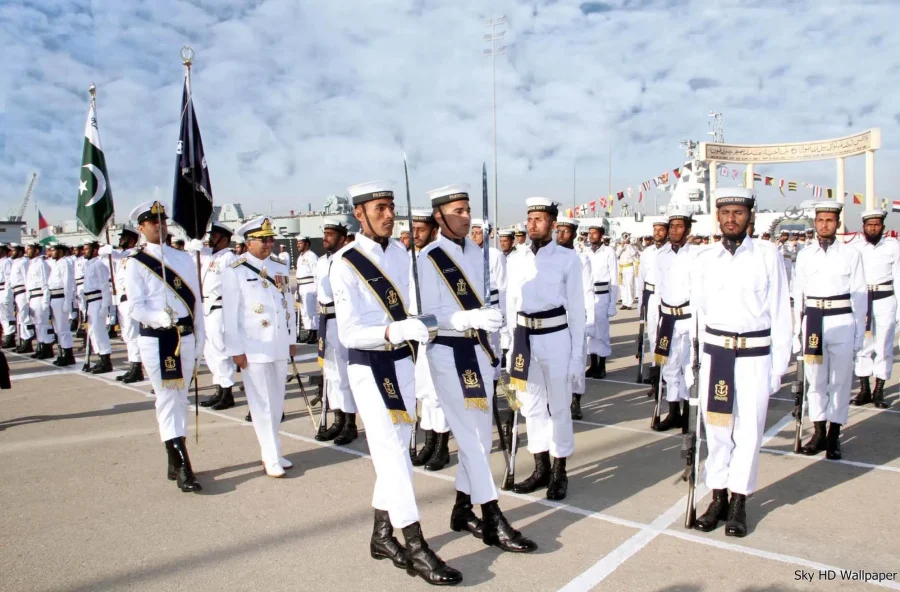Since its inception in 1947, the Pakistan Navy has played a vital role in securing the country’s maritime borders and protecting its national interests. As we commemorate 78th Independence Day, it’s essential to acknowledge Pakistan Navy’s unwavering commitment for defending sovereignty, promoting regional stability, and fostering international cooperation at sea. Pakistan Navy’s journey began with a small naval force comprising of a few naval warships and personnel.
Recognizing the strategic importance of a naval force, Pakistan embarked on establishing a robust naval force capable of protecting its maritime borders. Therefore, Pakistan Navy focused on developing infrastructure, training personnel, and acquiring essential naval assets, including warships, minesweepers, and patrol crafts from various countries. This marked the beginning of a long journey towards modernization.In this regard, the 1970s saw a significant expansion in naval assets with the acquisition of destroyers, frigates, and submarines. The induction of submarine capability into the naval force enhanced operational competence of Pakistan Navy.
Moreover, the establishment of the Karachi Shipyard & Engineering Works (KS&EW) and the Pakistan Naval Academy (PNA) boosted indigenous shipbuilding and human resource development capabilities, further solidifying the Navy’s foundation.During 2000s, Pakistan Navy intensified efforts to strengthen coastal defence and maritime security, establishing forward operating bases, coastal radar networks, and maritime surveillance systems. This enhancement enabled the navy to effectively counter emerging threats such as terrorism, piracy, and smuggling at sea.
The navy actively participates in international counter-piracy efforts, including Combined Task Force 150 and 151, contributing to the safety of maritime trade routes. Furthermore, Pakistan Navy has a commendable record in conducting humanitarian assistance and disaster relief operations. It has actively responded to natural disasters, both within Pakistan and across the region. Notable operations include relief efforts during the 2005 earthquake in Pakistan, the 2010 floods, and Covid-19 pandemic. Similarly, Pakistan Navy regularly send humanitarian aid to Africa in line with the government’s ‘Engage Africa’ policy that seeks to enhance bilateral relations and to explore new avenues of cooperation with African countries.
Moreover, Pakistan Navy engages in international cooperation initiatives, joint exercises, and peacekeeping operations, fostering goodwill and interoperability with friendly navies. It is important to highlight that it biennially conducts multinational exercise AMAN and participates in other bilateral exercises, showcasing its capabilities and commitment to global security. During wartimes, Pakistan Navy has always espoused high standards of professionalism and valour. In 1965 war, Operation “Dwarka” launched by Pakistan Navy caused irreparable damage to Indian Navy, vehemently destroyed the Indian Radar system. In addition, Pakistan Navy’s submarine Ghazi moved its patrol to Bombay harbor to challenge enemy’s ships namely INS Vikrant and INS Mysore to dock out and get destroyed. This psychological fear of Ghazi adversely affected the Indian Navy’s operational maneuvers.
Yet again in the 1971 war, sinking of Indian warship Khukri brought an immense wartime casualty by PNS Hangor, is the only incident after WWII wherein any conventional submarine sank a Warship. Furthermore, the detections of Indian Navy submarines, after Pulwama military standoff, by Pakistan Navy evidently portrays its effective employment strategy coupled with superior professional acumen. Over seven decades, Pakistan Navy has evolved into a professional and capable maritime force, navigating challenges and pursuing development, modernization, and self-reliance. From humble beginnings, the navy has grown into a formidable force, committed to safeguarding maritime interests and contributing to regional and global peace and security. Its unwavering dedication to defending sovereignty and promoting stability makes it a vital component of Pakistan’s defence strategy.










